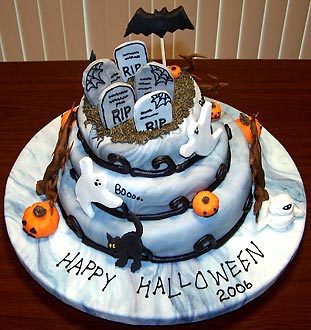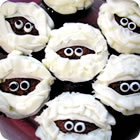This ritual food is blessed after the memorial Divine Liturgy performed at various intervals after a death; after the funeral; during mnemosyna - memorial services; on the first Friday of the Great Lent, at slavas, or at mnemosyna in the Christmas meal. Due to its pleasant taste, in some countries (though not in Greece or Cyprus), it is consumed on non-religious occasions as well, often with cream on top (though not with cream on fast days).
While recipes may vary widely, the primary ingredient is wheat kernels, which have been boiled until they are soft, and then sweetened with honey, sugar, and some fruit. It may also contain sesame seeds, almonds, ground walnuts, cinnamon, sugar, pomegranate seeds, raisins, anise and parsley. Romanians also decorate the koliva with crosses of cocoa, chocolate or candy. The practice of offering koliva is frequent in Greece, Cyprus, Bulgaria, Romania and Moldova, and is known in Russia and other Balkan countries.
When served, the koliva mixture, which looks something like earth, is shaped into a mound or cake to resemble a grave. The whole is then covered with powdered sugar and the initials of the deceased are outlined on the top. A candle, usually placed in the center of the koliva, is lit at the beginning of the memorial service and extinguished at its end. After the liturgy, those attending share in eating the koliva as they speak of the deceased and say, "May God forgive him/her."
Some Orthodox parishes have a designated individual charged with making the koliva. This is in part due to the health risk of fermented wheat if the koliva is not prepared correctly.
Sometimes koliva is made with rice instead of wheat. This custom began as a practical response to a famine that occurred in Soviet Russia, when the faithful did not have wheat available for koliva, so they used rice instead. Some communities continue to use rice for their koliva to this day. In the Japanese Orthodox Church where rice is mainly eaten, koliva is commonly made from rice sweetened with sugar and decorated with raisins, without reference to famine.
Similar practices may predate Christianity. The word stems from the Ancient Greek word κόλλυβo (kollyvo), which originally meant cereal grain. In the Ancient Greek panspermia, a mixture of cooked seeds and nuts were offered during the festival of the Anthesteria. For this reason, in Greece koliva is also called sperma (i.e., "seed"). However, the 12th century canonist Theodore Balsamon maintained that the practice was originated by Athanasius of Alexandria during the reign of the Emperor Julian the Apostate.
The association between death and life, between that which is planted in the ground and that which emerges, is deeply embedded in the making and eating of koliva. The ritual food passed from paganism to early Christianity in Byzantium and later spread to the entire Orthodox world. Orthodox Christians consider koliva to be the symbolic of death and resurrection, according to the words of the Gospel: Verily, verily, I say unto you, Except a grain of wheat fall into the ground and die, it abideth alone: but if it die, it bringeth forth much fruit. (John 12:24)
While recipes may vary widely, the primary ingredient is wheat kernels, which have been boiled until they are soft, and then sweetened with honey, sugar, and some fruit. It may also contain sesame seeds, almonds, ground walnuts, cinnamon, sugar, pomegranate seeds, raisins, anise and parsley. Romanians also decorate the koliva with crosses of cocoa, chocolate or candy. The practice of offering koliva is frequent in Greece, Cyprus, Bulgaria, Romania and Moldova, and is known in Russia and other Balkan countries.
When served, the koliva mixture, which looks something like earth, is shaped into a mound or cake to resemble a grave. The whole is then covered with powdered sugar and the initials of the deceased are outlined on the top. A candle, usually placed in the center of the koliva, is lit at the beginning of the memorial service and extinguished at its end. After the liturgy, those attending share in eating the koliva as they speak of the deceased and say, "May God forgive him/her."
 cake, recipes, halloween |  cakes, halloween, treats |  a gory Halloween cake. |  Halloween Pumpkin Cake Recipe |  Cake submitted by: V. Pauls |
 halloween cakes |  Cakes Ideas |  Halloween Recipes |  Graveyard Cake Recipe enlarge |  Cake submitted by: Amber T. |
Similar practices may predate Christianity. The word stems from the Ancient Greek word κόλλυβo (kollyvo), which originally meant cereal grain. In the Ancient Greek panspermia, a mixture of cooked seeds and nuts were offered during the festival of the Anthesteria. For this reason, in Greece koliva is also called sperma (i.e., "seed"). However, the 12th century canonist Theodore Balsamon maintained that the practice was originated by Athanasius of Alexandria during the reign of the Emperor Julian the Apostate.
 Print; Share; Save Recipe |  Recipe: Over the Moon Cake |  The cakes in our Halloween |  Halloween Recipes |  ghost halloween cake recipes |
 Halloween Cake Recipe: Kitty |  This mocha Halloween cake from |  Halloween Cake Recipes With |  Halloween Cakes |  Halloween Cakes and Cupcakes |
No comments:
Post a Comment